Tokyo Outdoors: 45 Walks, Hikes and Cycling Routes to Explore the City Like a Local (Ebook)
Tokyo Outdoors: 45 Walks, Hikes and Cycling Routes to Explore the City Like a Local (Ebook)
Couldn't load pickup availability
Tokyo Outdoors is the only guide you’ll need to fully explore Tokyo and the surrounding Kanto region. On foot, by bicycle or hiking, this book not only takes you to the main tourist spots, but also countless off-the-beaten-track spots. From famous historical landmarks such as the Imperial Palace to modern attractions like the Tokyo Skytree, this travel book offers something for any kind of person, whether you’re a visitor to Japan or living in the capital.
Fully up-to-date, Tokyo Outdoors contains:
- 45 walks, cycling rides and hikes in and near Tokyo,
- Hundreds of insider tips from a writer who has lived in the city for more than 10 years,
- 12 day trips that include Yokohama, Nikko, Kamakura, Enoshima and Karuizawa,
- More than 40 detailed print maps,
- Online maps included for use on the go, with additional recommendations for food and drink, shopping, temples and shrines,
- Beautiful color photos offer an impression of amazing sights you’ll visit,
- Recommended restaurants and cafes,
- A simplified Tokyo subway map,
- Super easy to use with a train pass, as each itinerary starts and ends at a railway station,
- Festivals and events calendar, based on locations in the book,
- Lists of the best cherry blossom and autumn leaves spots,
- Top 5 lists for various interests, such as history, culture, shopping, art and museums.
Share
- Works on Kindle, Kobo, Nook and all ebook readers & apps
- Free updates of future editions
- DRM-free ePub (ebook) and PDF files provided
Book details
Book details
File types: ePub (DRM-Free) and PDF
ISBN: 9781919631561
Publication date:
Written by Matthew Baxter
Illustrated by James Hernandez
Locations covered
Locations covered
Shibuya to Harajuku, Shibuya, Asakusa, Odaiba, Tokyo Station, Nishi-Shinjuku, Shin-Okubo, Shinjuku to Akasaka, Minato City, Daikanyama, Shinagawa, Haneda Airport, Oji to Oshiage, Ueno Park to Yanaka Ginza, Ueno and Nippori, Akihabara, Akasaka, Roppongi and the National Diet, Ikebukuro, Sugamo, Roppongi, Ginza, Tokyo Imperial Palace, Meguro River, Jiyugaoka, Nakano, Chofu, Tamagawa River, Ikegami, Koto City, Shibamata, Showa Kinen Park, Fussa, Oji to Itabashi, Machida, Yokohama, Yamate, Nikko, Kamakura, Enoshima, Karuizawa, Karuizawa's Apt Road, Hachioji (near Mount Takao), Mount Oyama, Boso Peninsula, Odawara, Izu Peninsula, Cherry blossoms (sakura) spots
File delivery
File delivery
For ebooks, you will get an email with a link to download the ebook, or you can simply follow the quick instructions to send it to your preferred device.
How do I read the ebook
How do I read the ebook
You can read the ebooks on any e-reader (Amazon, Kobo, Nook), your tablet, phone, computer, and/or in the free Bookfunnel app.
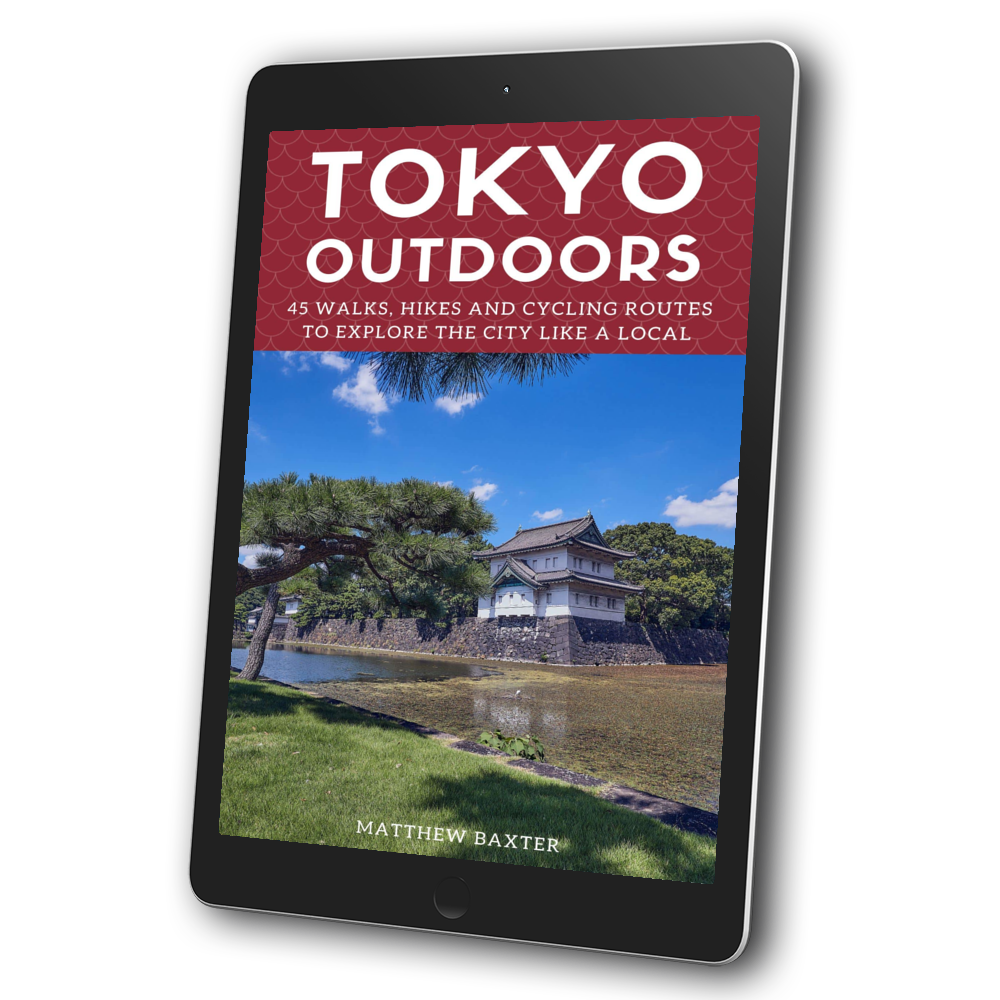
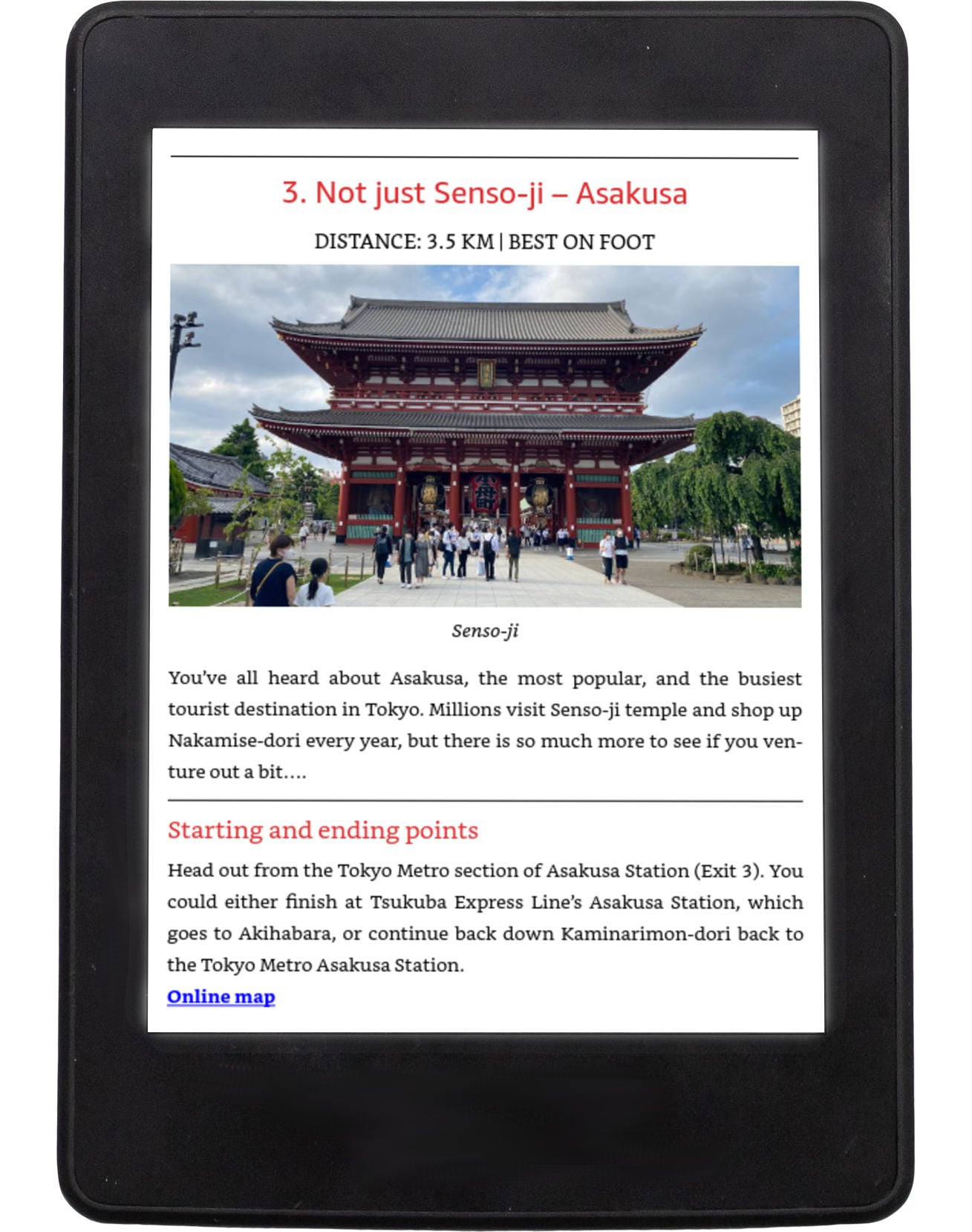

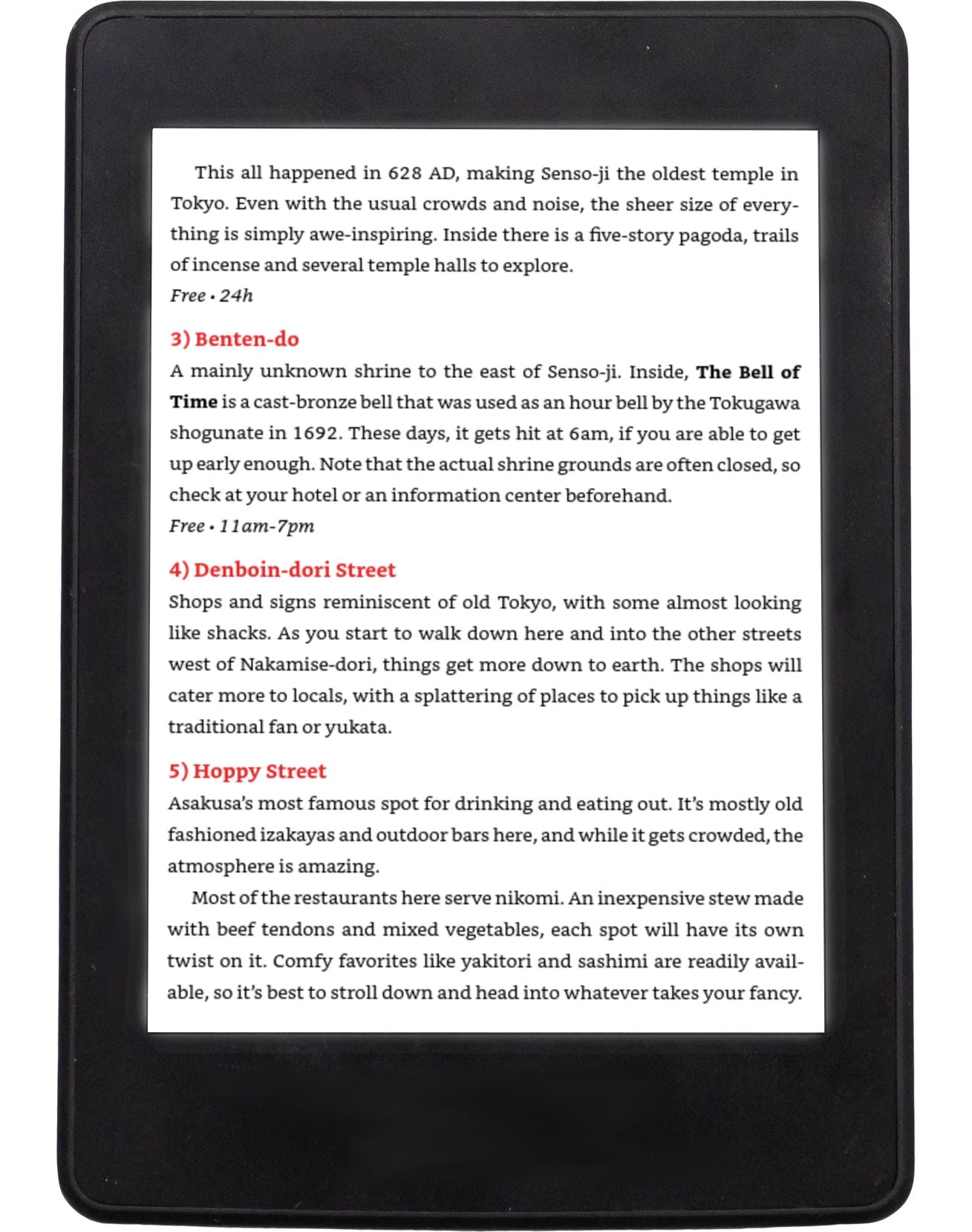
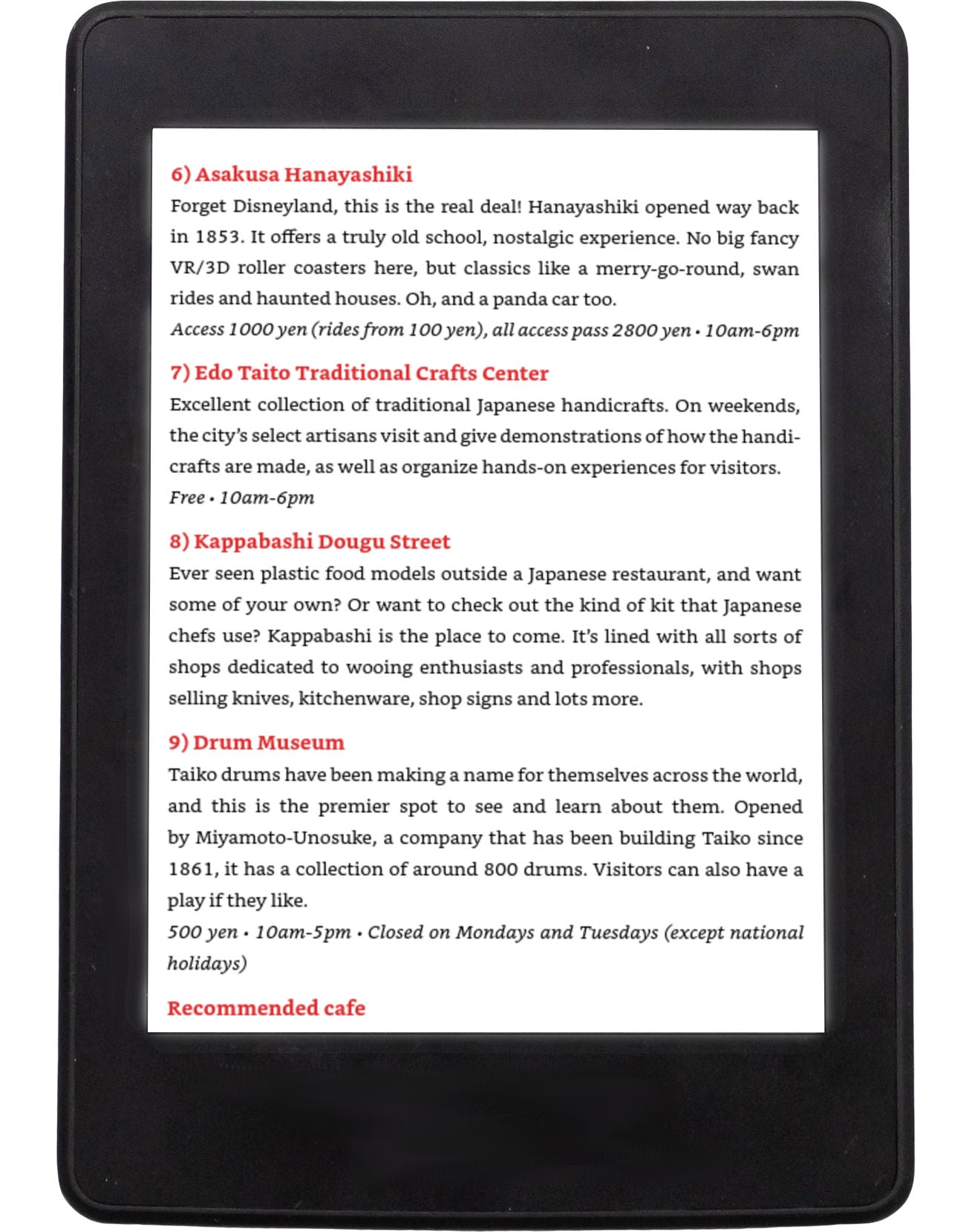
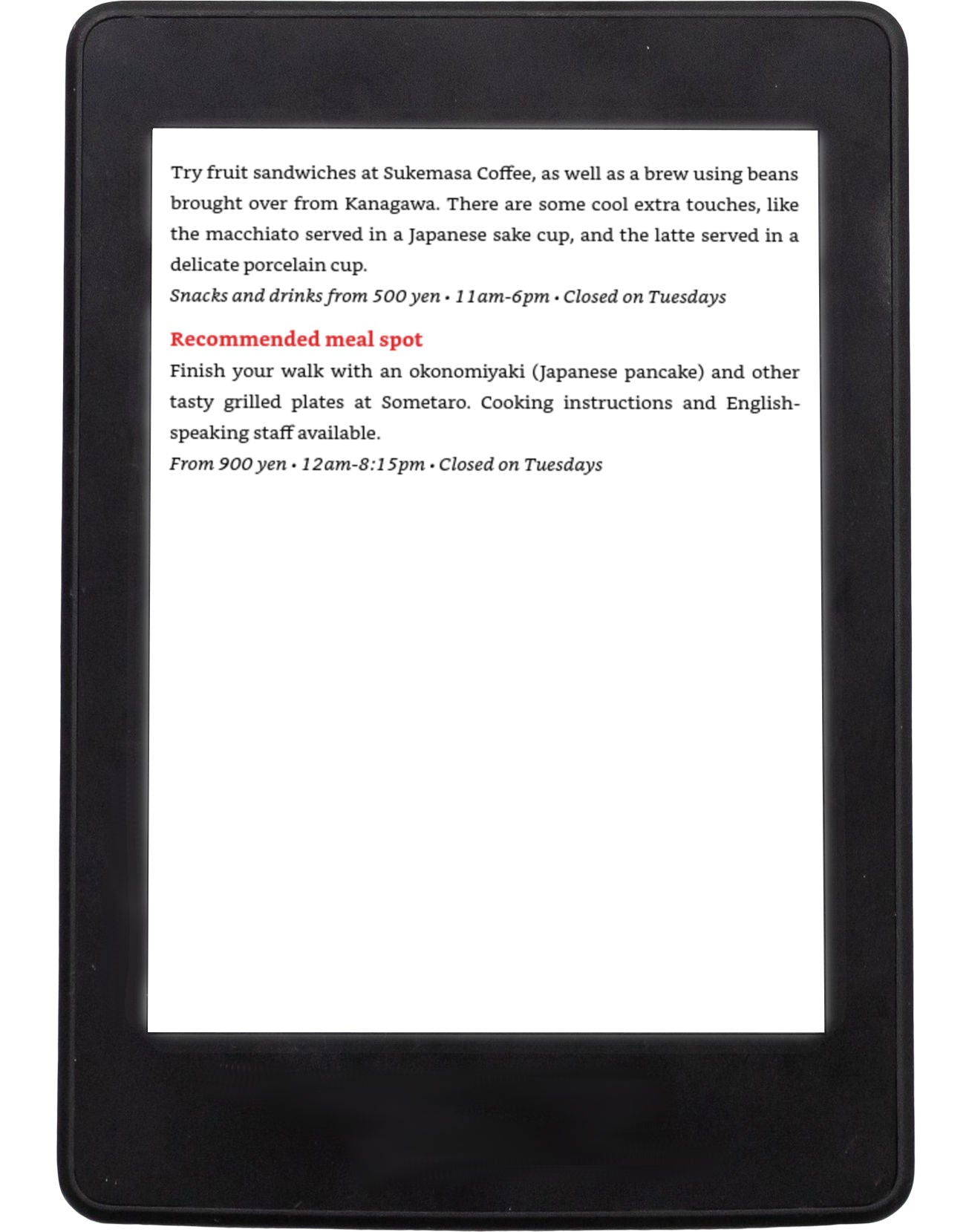

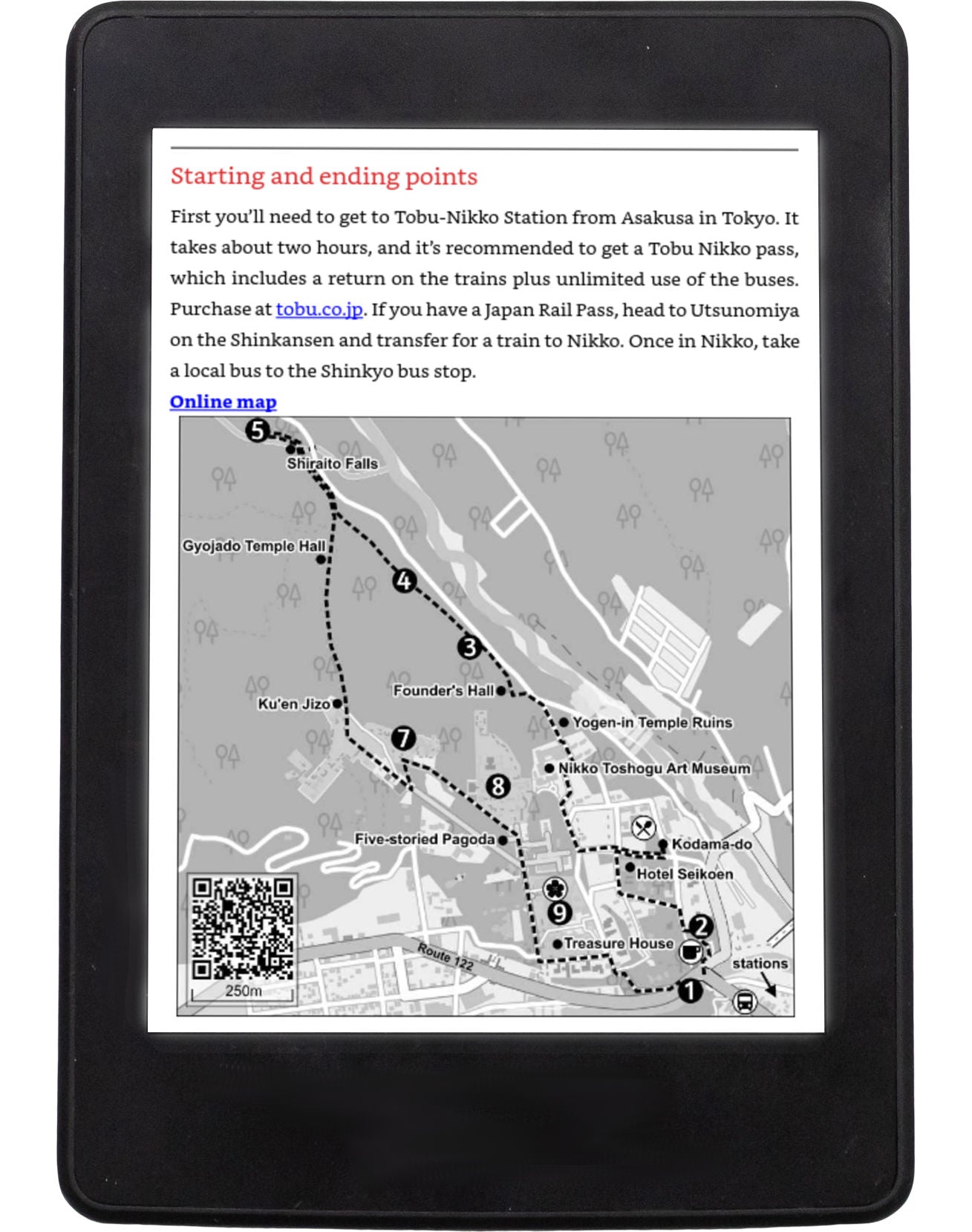
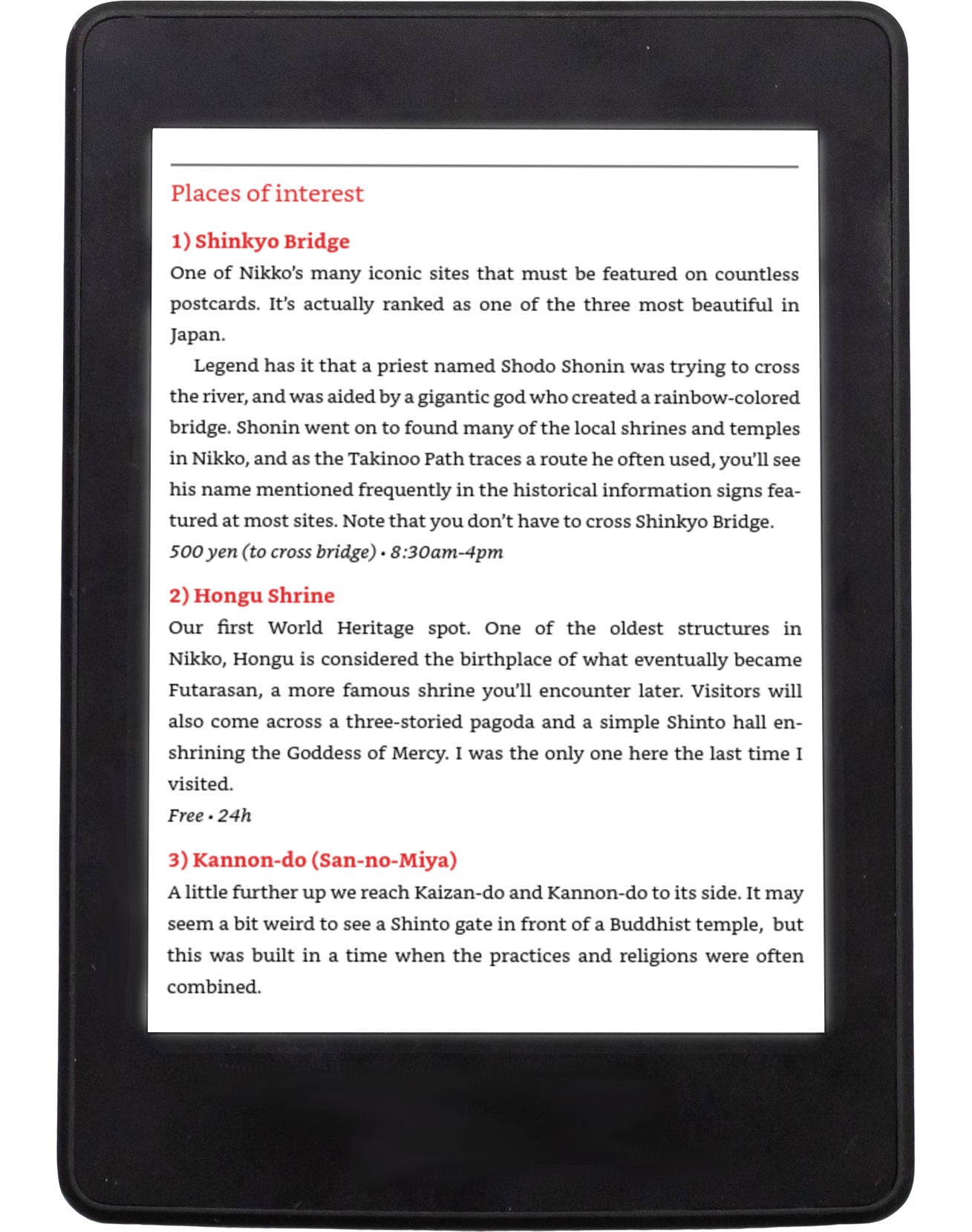
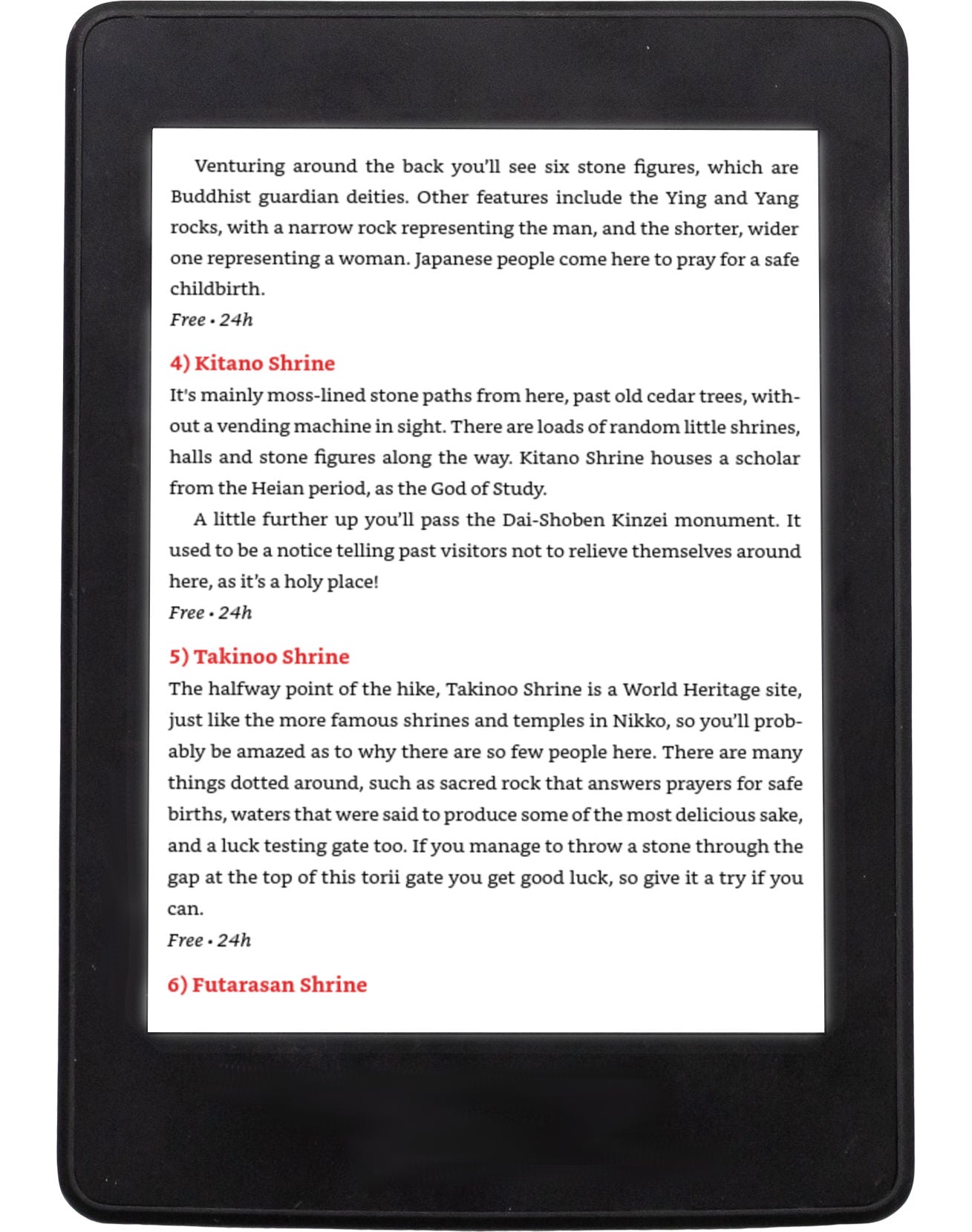
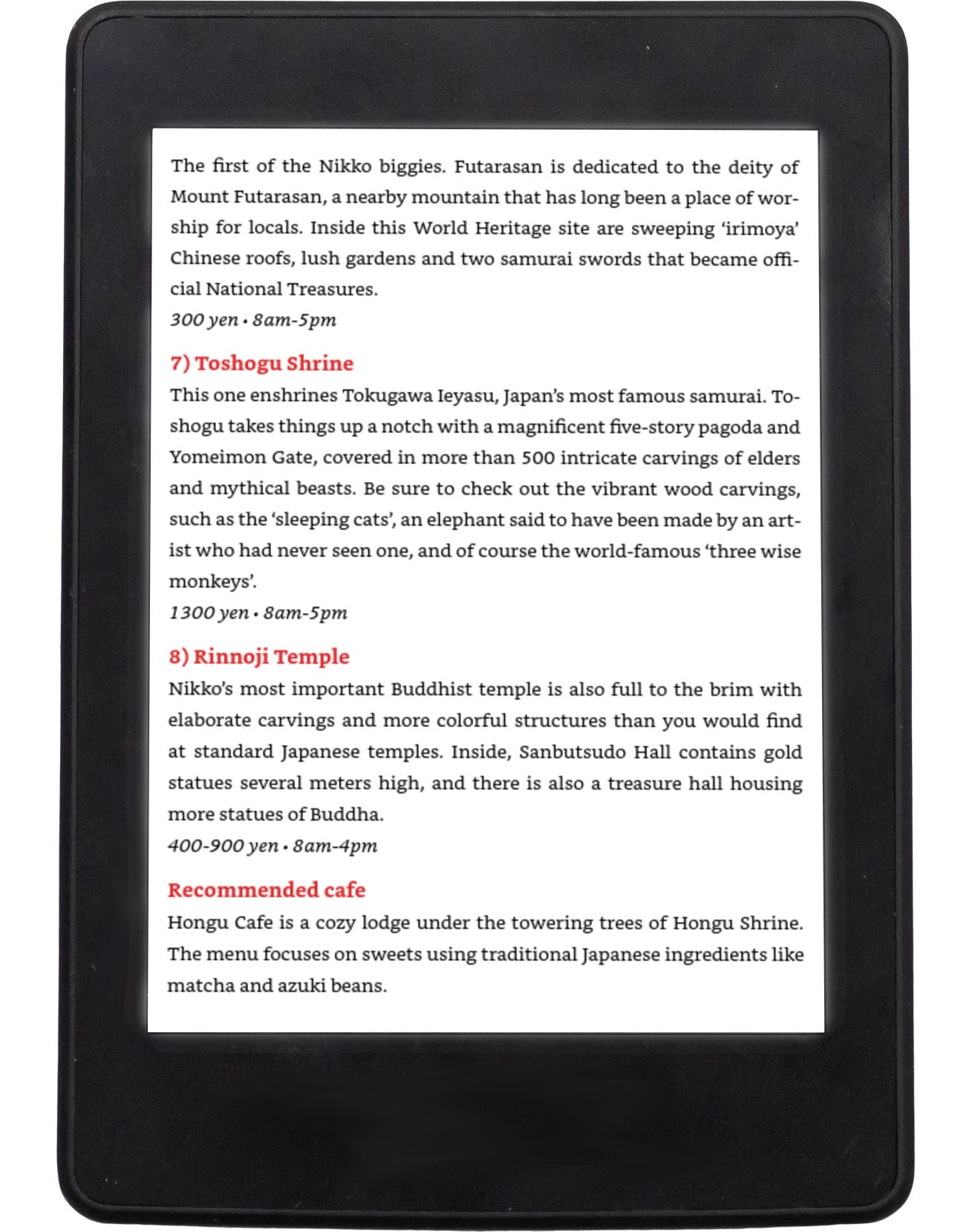
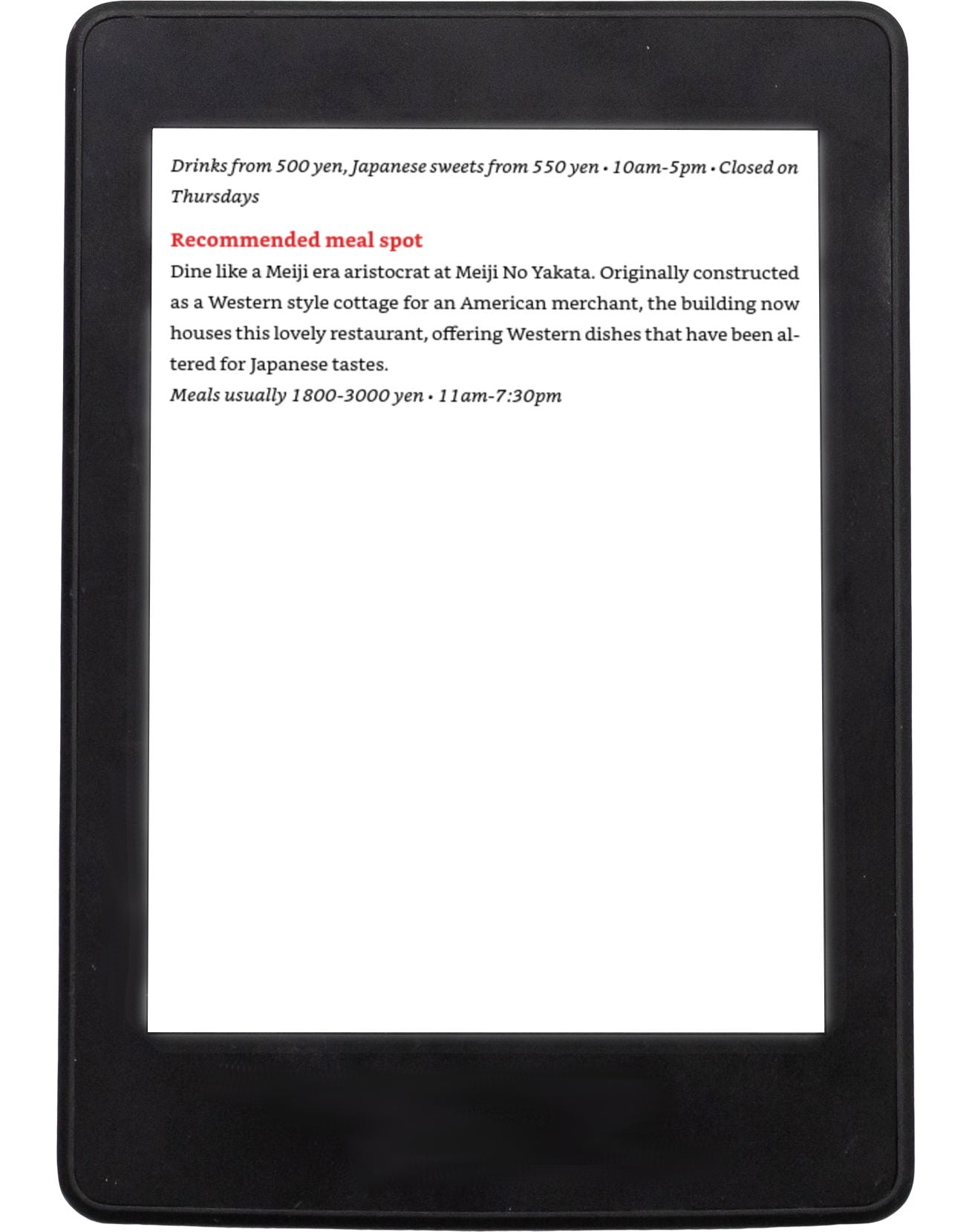
This book is VERY clever. I was last in Tokyo ~17 years ago, (so we didn't have Google maps or smartphones yet) and I used only guidebooks and a printed book of maps to get around. Now that both these things exist, this book does a great job of incorporating links to pre-delineated Google directions for each of the routes. Each route also has points of interest, with lots of inexpensive food options (the author states that he's committed to keeping the route info updated, which is rare for guidebooks, as they can easily go out-of-date). I was also excited to see some of the more hidden places that I found during my brief time in the city mentioned in the text. The images and location descriptions gave me that ~~*natsukashii*~~ feeling and made me want to hustle back to Tokyo with this book in tow. Next time I'm in Tokyo I will definitely be doing some of these urban hikes!
Matthew Baxter’s Tokyo Outdoors is a travel guide tailor-made for the traveler interested in exploring the city’s many obscure attractions as well as the familiar tourist spots. With easy-to-follow maps and informative descriptions, this concise guide is the perfect companion book to make your trip an intriguing and memorable adventure.
This is one of those truly fantastic books that should be in every traveller's backpack or Kindle, if they're visiting Tokyo. It has a wealth of information about everything you'll find in that gigantic city but, even more importantly, it has easy to follow subway instructions for getting around. Tokyo isn't tourist-friendly when it comes to readable signage, and that includes subway signs. Of course, apps are making it easier and easier, but it's still not as easy as having clear instructions in your own language whenever going out, and this book does that. I'm keeping this one in my Kindle, and I'll be buying a physical copy next time I head to the Rising Sun.
I wish I had had this book when I lived in Tokyo many years ago. In the year that I lived there, I spent many days walking around the city, seeking out various sights and museums (without smartphone or Internet). I gradually discovered how the various wards and neighborhoods all have their own distinct characters, from quiet residential streets to bustling shopping districts, to verdant parks. For someone who doesn't have a year to learn their way around Tokyo, this book offers an excellent way to make the most of your time there, with a wide selection of walking and biking routes that will give you a feel for the wonderful variety that Tokyo has to offer. Each route in the book focuses on a specific region, with an easy-to-follow map, and descriptions of the highlights (shopping, historical sites, temples, shrines, etc.).
I really appreciated the books' attention to detail, such as recommendations on days of the week to take (or avoid) a particular route. There are also suggestions on places to eat or drink along the routes. "Tokyo Outdoors" also includes some routes somewhat outside of the Tokyo area, such as Mount Takao, to the east, and Yokohama, including its famous Chinatown. If you're the type of traveler who enjoys getting off the beaten path and appreciates walking as a way to really see a city up close, I would wholeheartedly recommend this book.
I'm planning a trip to Japan in a few years. This book has given me many thing to add to my agenda when traveling there. The book has a really nice layout, with a map of the whole area at the beginning of it. I love that the author goes further with adding in places nearby those areas, and suggesting things like where to stop for food and such.
This is a very good guidebook. I liked that there are maps of the area added to each itinerary. For me, Tokyo is a very difficult city to navigate. There are good descriptions of the sights and what is especially nice are the places to eat.
Your ultimate guide to discovering Tokyo and its surrounding Kanto region. With 45 diverse walking, cycling, and hiking routes, this book goes beyond tourist hotspots to unveil hidden treasures. Packed with insider tips from a seasoned Tokyo resident, it features 12 exciting day trips, detailed maps, and online resources for easy navigation. From historical landmarks to modern attractions, ensures a memorable and authentic exploration of Japan's vibrant capital.
I've been to Tokyo a few times, and I wish I had this book on one of my trips! This is a unique way to experience a big city, and offers a very different perspective than the usual Tokyo guidebook. Tokyo is a beautiful city, take advantage of this book to experience it to the fullest!
I love to travel and plan out the details of the places I visit. I often conduct extensive research on my destination and try to find unpopular places to visit. This book leaves no stone unturned when it comes to things to do, places to see no detail is left out. This is a must have guide when traveling to Tokyo.















